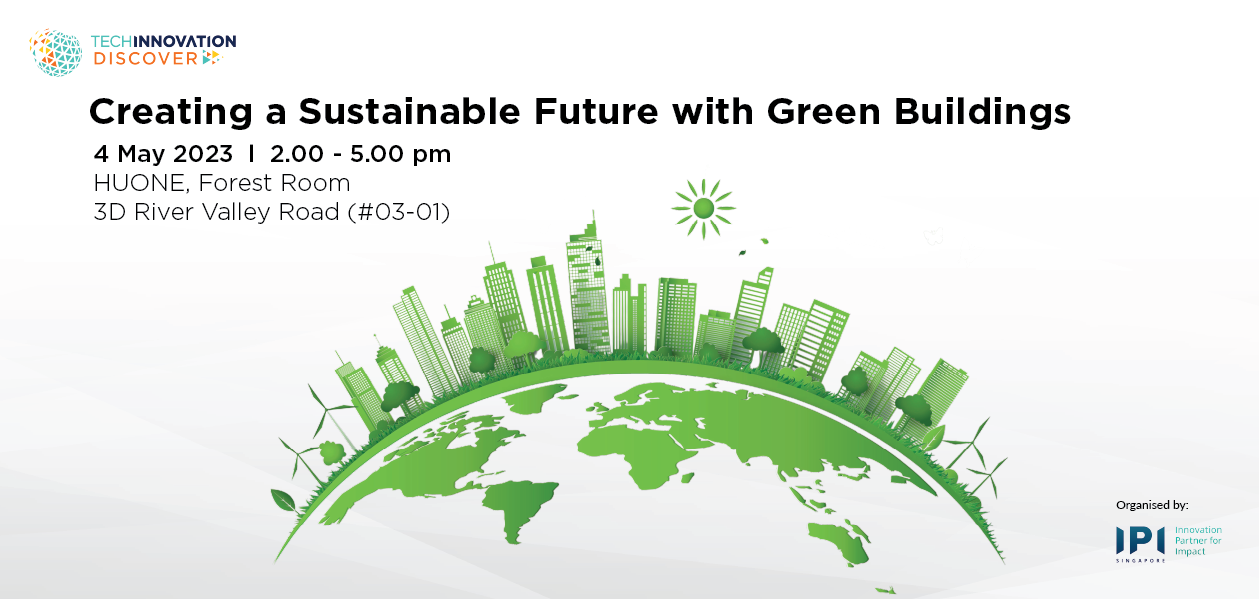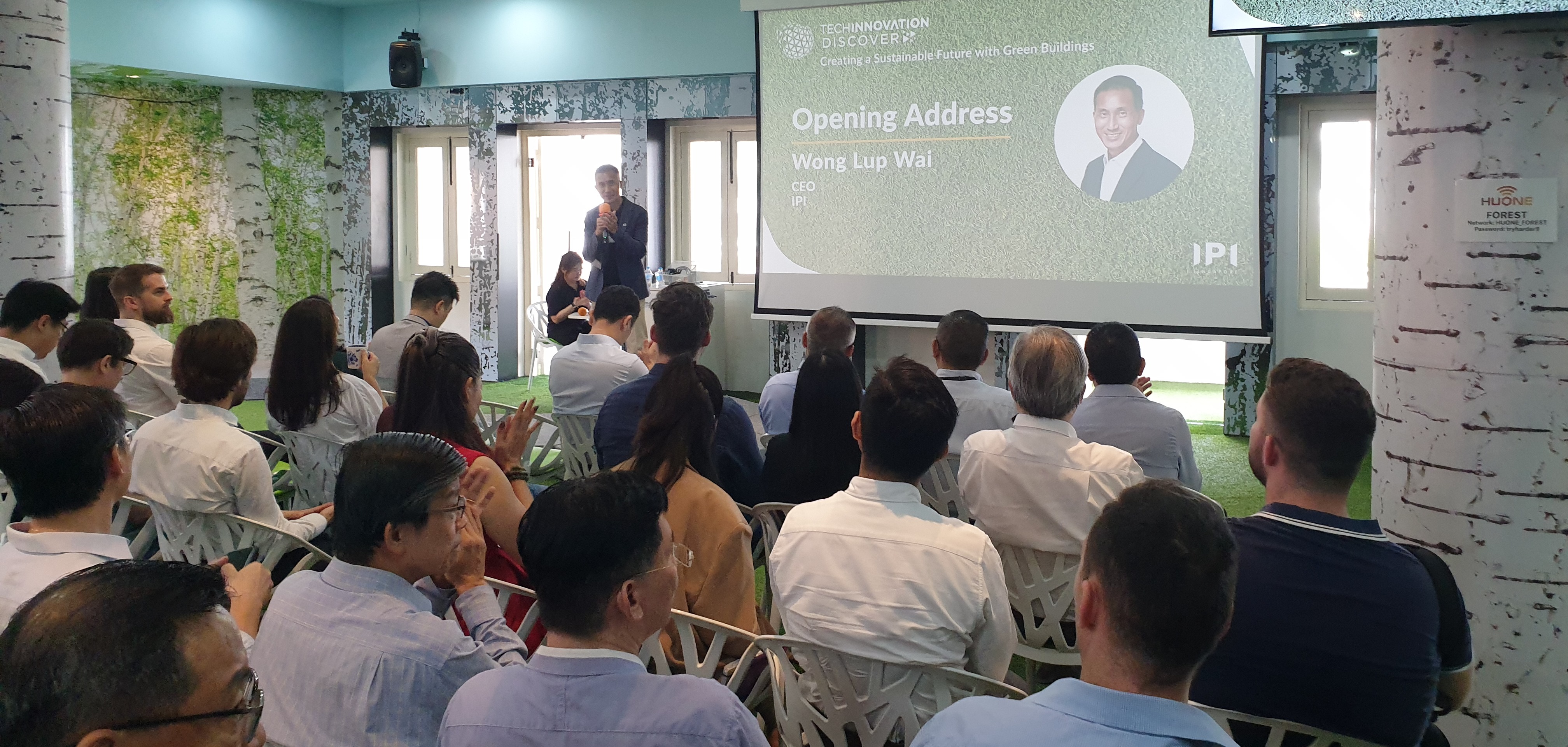At IPI’s Creating a Sustainable Future with Green Buildings event, experts gathered to share the latest advancements and technologies that support green building development.
This week, climate scientists at the World Meteorological Organisation warned that one of the next five years is expected to be the warmest on record. As we approach never-before-seen temperatures, many nations have shifted slashing carbon emissions to the top of the agenda. The built environment, made up of buildings, cities, parks and urban spaces, holds a major share of the emissions pie—accounting for almost 40 percent of energy and process-related output. As urbanisation swells, a sustainable future could hinge on the building sector reducing its carbon footprint.
Green buildings that employ energy-efficient technologies and renewable resources can dramatically decrease greenhouse gas emissions and wean industries off fossil fuels. The Singapore Green Building Masterplan, part of the Singapore Green Plan 2030 launched in 2021, aims to achieve three ambitious objectives by 2030: (1) to have at least 80 percent of buildings in Singapore (by floor area) be green buildings, (2) to ensure 80 percent of new buildings are low-energy and (3) to enhance the energy efficiency of existing buildings by 80 percent.
Organised by IPI, the 'Creating a Sustainable Future with Green Buildings' event was held on 4 May 2023 and gathered leading experts and IPI partners to share insights into some of the latest technologies, resources and collaboration opportunities that support the development of green buildings.
In his opening remarks, Wong Lup Wai, CEO of IPI, said, “We hope this event serves as a catalyst for innovation, fostering collaboration and idea exchange towards a greener, more sustainable future in the green building space.”
Riding current sustainability trends
The event’s guest speaker, Tan Szue Hann, Head of Sustainability and Deputy General Manager of Sustainable Urban Renewal at Keppel's Real Estate Division, outlined emerging trends in the sector. “Sustainable urban renewal involves refurbishing existing buildings to improve their efficiency and evaluating their performance against decarbonisation guidelines,” said Tan.
One example is Singapore’s Keppel Bay Tower. The 20-year-old building was upgraded to improve energy efficiency, earning it the status of the first commercial building to achieve the Green Mark Platinum (Zero Energy) certification in the city-state. This was accomplished through various innovative solutions, from smart lighting and onsite solar-power generation to state-of-the-art systems monitoring the building’s cooling systems.
“The rejuvenation of Keppel Bay Tower is a good example of Keppel's sustainable urban renewal solutions. Upgrading a building not only contributes towards sustainable development by reducing waste and supporting the circular economy, it is also less costly than developing a new building from the ground up,” added Tan. “Modern buildings also need to respond to societal trends, such as catering to an ageing population and the changing needs of the post-COVID workforce. Sustainable urban renewal can provide a cost-effective and eco-efficient way to help building owners respond to these trends.”
Harnessing big data to foster innovation
Big data has suffused many aspects of modern operations, including that of the green building sector. Businesses can leverage data generated within a building to make informed decisions that reduce their carbon footprint. For instance, Azendian Solutions, an artificial intelligence (AI) and data analytics company, offers a machine learning (ML) platform that can be integrated with a building’s heating, ventilation and air conditioning (HVAC) system. Data-driven and easy to deploy, the system allows buildings to respond swiftly to changing conditions, enhancing both occupant comfort and energy efficiency.
A bird’s-eye view of a building can also help innovators pinpoint areas for improvement. Using advanced ML techniques, HY M&E Consultancy Services helps businesses create a digital twin of their building, to which energy conservation measures can then be applied. Through a process of continuous refinement, the energy efficiency of the building is systematically improved.
Reflecting on the event, Rowena Rawte, Global Head of Sustainability at HY M&E, said, “In the face of climate change, gatherings like these foster collaborative discussions on pressing issues, serving as catalysts for sustainability innovation in the built environment.”
Moreover, operators can also harness the power of internet-connected devices, establishing an extensive network that can be used to enhance building operation and efficiency. To that end, Singapore-based IoT provider Unabiz presented their collaboration with facilities management firms to deploy sensors that empower building managers to supervise a wide range of metrics, including water usage, energy consumption and even temperature control in smart restroom facilities.
Better materials for a better environment
Apart from using digital technology to improve building sustainability, the choice of construction materials can also greatly impact the eco-friendliness of a building. Krosslinker, a nanomaterials company, has developed a patented platform that produces an aerogel-based insulation material. This lightweight, robust and fire-resistant insulator can be incorporated into other materials like concrete and plaster, promoting energy efficiency through superior thermal regulation.
“Building connections with other companies that share our vision is crucial,” noted Baha Akhmetov, Application Engineer at Krosslinker. “We believe strategic collaborations, whether through licensing our technology, direct sales or regional partnerships are instrumental in expanding our sustainable solutions. This IPI event serves as an ideal platform for such collaborations.”
The Centre of Innovation for Built Environment – Advanced Materials, a joint effort between Singapore Polytechnic, Republic Polytechnic and Temasek Polytechnic and supported by Singapore’s Building and Construction Authority, is dedicated to innovating sustainable materials. The organisation’s initiatives range from converting incineration ash into reusable building materials to 3D-printing low-carbon materials for the built environment sector.
Efficiency improvements can sometimes be as straightforward as applying an innovative coating. Nipo International, a Singaporean firm specialising in protective coatings for infrastructure, has spearheaded advanced paints and coatings that not only provide corrosion resistance but also enhance thermal insulation, contributing to the longevity and efficiency of buildings.
By adopting cutting-edge digital technology or superior building materials, the IPI event showcased a plethora of innovative strategies that companies in the built environment industry can employ to work towards a greener, more sustainable future.
To continue driving innovation and technology and to further connect the ecosystem, IPI’s flagship technology brokerage event, TechInnovation is slated to return this October 2023. The annual event is expected to welcome stakeholders from across the globe to discover, connect and collaborate.
For more information, visit www.techinnovation.com.sg or contact [email protected]




